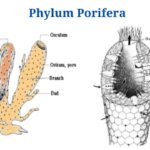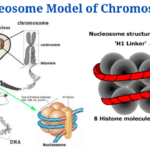What is Stratified Squamous Epithelium?
The stratified squamous epithelium is made up of multiple layers of cells, with squamous cells at the apical layer and several layers below it, but cuboidal to columnar cells in the deeper layers. Because the most significant difference between a simple epithelium and a stratified epithelium is the number of layers of cells, the functions of these layers differ in the same way, despite the fact that their structure is similar. The cells in the superficial layers are driven towards the surface, where they are shed, as a result of continuous cell division in the lower (basal) layers.
Structure of the Stratified Squamous Epithelium
- Two or more layers of cells make up the stratified squamous epithelium. Squamous cells make up the apical layer and several layers below it, whereas cuboidal to columnar cells make up the lower layers.
- Only one layer of the stratified squamous epithelium is directly connected to the basement membrane, while the remaining layers are related to one another to maintain structural integrity.
- Daughter cells resulting from cell divisions push older cells upward toward the apical surface when basal cells divide.
- The epithelium’s cells are firmly connected, with minimal intracellular gaps.
- Unlike simple epithelium, just the outermost layer of the tissue is exposed to the lumen at the apical surface of stratified epithelium. Cell junctions and adhesions connect all of the other sides of the cells to each other.
- These cells have multiple desmosomes and other adhesins, and as they approach closer to the surface, their shape becomes more uneven, then flattens.
- They become dehydrated and metabolically inactive as they travel toward the surface and away from blood supply in underlying connective tissue.
- As the cytoplasm is decreased, tough proteins prevail, and cells become sturdy, hard structures that finally die.
- Dead cells are sloughed off at the apical layer once they lose cell connections, but they are constantly replaced as new cells emerge from basal cells.
- The stratified squamous epithelium, like all other epithelial tissue, lacks a direct blood supply but does have a separate nerve supply.
What is PhD : Meaning, How to Do, Benefits, Full Details
The stratified squamous epithelium is divided into two categories based on the deposition of keratin by the cells towards the surface:
1 . Keratinized Stratified Squamous Epithelium
- Keratinized stratified squamous epithelium is a form of stratified squamous epithelium in which the apical segment of the cells has a stiff coating of keratin and numerous layers deep to it.
- Keratin is an intracellular protein that protects the skin and underlying tissues from heat, pathogens, and pollutants.
- In the process of keratinization, cells acquire keratin and become thin, metabolically inert pockets (squames) of keratin lacking nuclei as they travel upwards.
- As cells move away from the nutritive blood supply, the amount of keratin in them grows, and the organelles eventually die.
- The cells on the top layer lose all function as a result of keratinization and are primarily involved in providing protection against dehydration and other mechanical stress.
2. Non-keratinized Stratified Squamous Epithelium
- The non-keratinized stratified squamous epithelium is a type of squamous epithelium in which the cells are moistened by mucus from the salivary or mucus glands rather than keratin deposits.
- The nuclei and most metabolic functions of the flattened cells of the surface layer are preserved in this circumstance.
- Because non-keratinized stratified squamous epithelium has less keratin deposits than keratinized stratified squamous epithelium, it is typically found in places that need to be kept hydrated or are dry.
- The amount of keratin in this epithelium varies depending on the age of the tissue layer and the degree of mechanical wear and tear it has endured.
- To protect the surface from drying out, some cells of this epithelium may create trace amounts of mucus and other lubricants.
Stratified squamous epithelium Functions
Protection is the most important and critical function of stratified squamous epithelium.
1. Protection
- The stratified squamous epithelium protects against mechanical stress, chemical abrasions, and even radiation.
- The keratinized epithelium on the surface of the skin shields damaging radiation and prevents internal tissues and organs from being exposed to it.
- Similarly, it minimises water loss due to heat and internal organ damage caused by physical stress.
- When this epithelium is destroyed, it replaces the outermost layer, which improves resistance to stress and invasion.
- Because the surface is kept continually moist, the non-keratinized stratified squamous epithelium prevents foreign invaders from entering.
- The stratified squamous epithelium, in both forms, serves as the initial line of defence against microbial invasion and physical injury.
2. Secretion
- As previously stated, the non-keratinized stratified squamous epithelium is made up of cells that create mucus to keep the surface moist.
- As in the case of the vaginal epithelium, mucus also aids in balancing the pH of the surrounding environment.
- It also functions as a lubricant in areas that are regularly subjected to friction, such as the buccal cavity.
Stratified Squamous Epithelium Location and Examples
- The keratinized epithelium, like the superficial layer of the skin, lines the region exposed to the external environment and continuously subjected to stress.
- The epidermis of the palm of the hand and the sole of the foot are likewise made up of it.
- The lining of internal surfaces and cavities, which are frequently subjected to friction and physical wear and tear, is made up of non-keratinized epithelium.
- The stratified squamous epithelium lines the surface of the tongue, the hard upper palate of the mouth, the oesophagus, and the anus in the digestive system.
- It can also be found in female reproductive organs such as the vagina, cervix, and labia majora.
- Stratified epithelium also lines the upper respiratory system, which may come into touch with food.
- The urethra’s epidermis is similarly made up of stratified squamous epithelium in the urinary system.
Click Here for Complete Biology Notes
Stratified Squamous Epithelium Citations
- https://quizlet.com/520672303/anatomy-chapter-3-tissues-flash-cards/
- https://ibiologia.com/stratified-squamous-epithelium/
- https://www.wisegeek.com/what-is-a-stratified-epithelium.htm
- https://www.kenhub.com/en/library/anatomy/stratified-epithelium
- https://wikimili.com/en/Stratified_squamous_epithelium
- https://study.com/academy/lesson/what-is-stratified-squamous-epithelium.html
- https://quizlet.com/186916252/chapter-12-skin-the-integumentary-system-flash-cards/
- https://pediaa.com/difference-between-simple-and-stratified-epithelium/
- https://biologydictionary.net/stratified-squamous-epithelium/
- https://www.toppr.com/guides/biology/tissues/epithelial-tissue/
- https://www.jeffersondentalclinics.com/blog/understanding-ph-balance-in-the-mouth
- https://www.answers.com/Q/Type_of_epithelial_tissue_is_likely_to_be_found_on_the_palm_of_the_hand
- https://quizlet.com/267539630/keratinized-stratified-squamous-epithelium-diagram/
- https://quizlet.com/20078311/cell-division-flash-cards/
- https://en.wikipedia.org/wiki/Epithelial_layer
Related Posts
- Phylum Porifera: Classification, Characteristics, Examples
- Dissecting Microscope (Stereo Microscope) Definition, Principle, Uses, Parts
- Epithelial Tissue Vs Connective Tissue: Definition, 16+ Differences, Examples
- 29+ Differences Between Arteries and Veins
- 31+ Differences Between DNA and RNA (DNA vs RNA)
- Eukaryotic Cells: Definition, Parts, Structure, Examples
- Centrifugal Force: Definition, Principle, Formula, Examples
- Asexual Vs Sexual Reproduction: Overview, 18+ Differences, Examples
- Glandular Epithelium: Location, Structure, Functions, Examples
- 25+ Differences between Invertebrates and Vertebrates
- Lineweaver–Burk Plot
- Cilia and Flagella: Definition, Structure, Functions and Diagram
- P-value: Definition, Formula, Table and Calculation
- Nucleosome Model of Chromosome
- Northern Blot: Overview, Principle, Procedure and Results

















